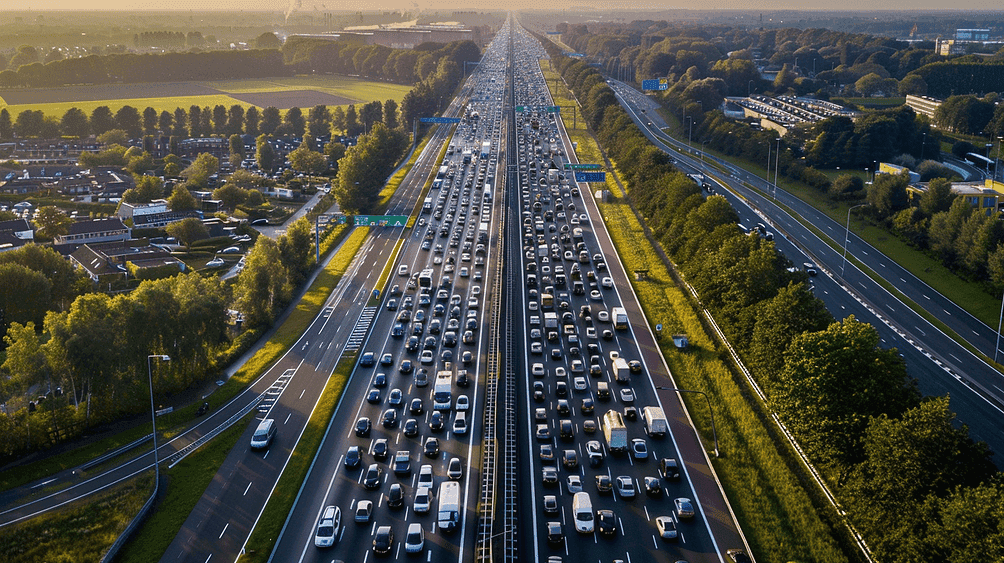2024 was the year of traffic jams. AI comes to the rescue
Increasingly, AI is coming to the rescue to manage traffic conditions.
Published on December 27, 2024

Team IO+ selects and features the most important news stories on innovation and technology, carefully curated by our editors.
2024 was the year of the traffic jams. The ANWB reports, based on traffic data from TomTom, that congestion severity on Dutch roads increased by 8 percent this year compared to 2023. Particularly outside rush hours, traffic jams were significantly longer.
Population growth and more vehicles
Strikingly, there was actually a decrease in the number of traffic jams in the first half of 2024, but in the last six months the number of traffic jams increased “significantly.” According to the ANWB, the cause of this increase is mainly due to population growth and the growing number of vehicles on the road.
AI is increasingly coming to the rescue
But increasingly AI is coming to the rescue to manage the traffic situation. With accurate AI observations as a starting point, a traffic management system can continuously determine the most appropriate “response” to the current traffic situation. Several British cities, for example, are using a monitoring system from VivaCity, which combines cameras with convolutional neural networks. This artificial intelligence can not only count the number of traffic participants but also distinguish between different types, such as cars, trucks, buses, cabs, pedestrians, cyclists, scooters, and e-scooters. In addition, the system provides insights into travel times and near misses.
Road authorities in the Netherlands, Belgium, and Denmark are also increasingly deploying cameras with AI to enable similar applications. Here, the focus is often on monitoring cyclists and pedestrians, modalities that have traditionally been less well-measured. One example is the FlowCube. FlowCubes can be placed at various locations around the city. By using multiple sensors, it is possible to map the routes and travel times of cyclists and pedestrians.
AI is additionally fast becoming the actual conductor of urban traffic. Jakarta's implementation of an intelligent AI traffic light system has significantly improved its global congestion rate from 46th to 29th in just one year. Istanbul is also using AI with SAS analytics to manage its notorious traffic problems.
